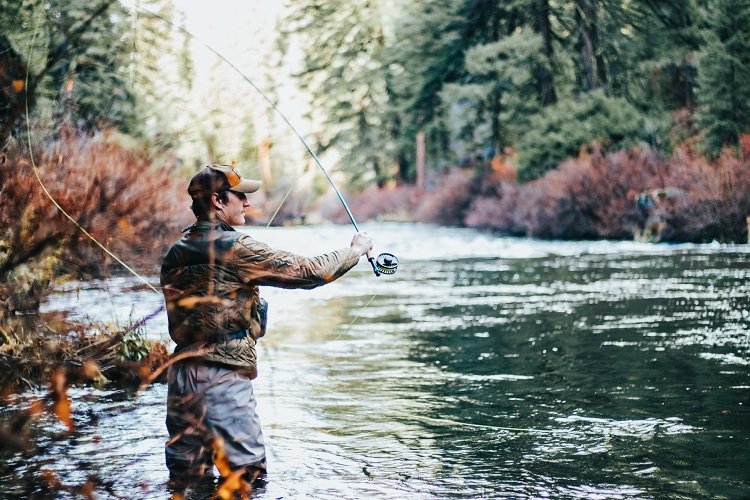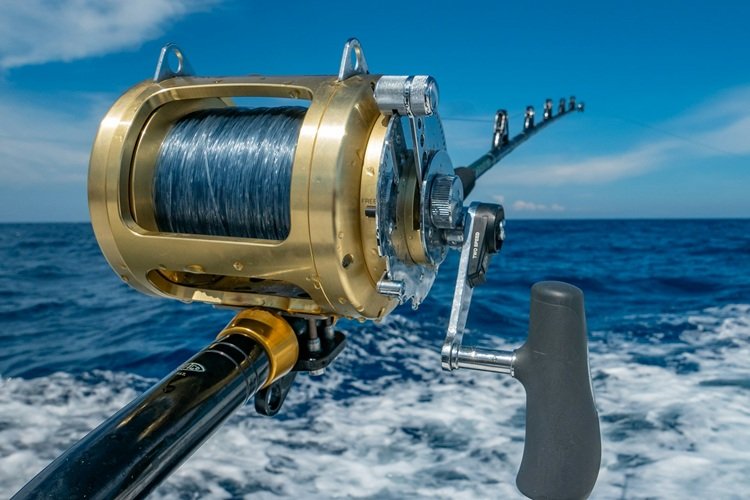
How to Choose the Right Fish Catching Tools for Your Next Fishing Trip
Author:White Fox Corporation
Published on:Jun 09 2025
Planning your next fishing adventure? Great!
But before you pack your cooler and hit the water, there's something you really need to get right: your fish catching tools. Choosing the right ones isn’t just about catching more fish, it's about making your trip smoother, easier, and more fun.
The fishing equipment market is expected to grow to USD 2.54 billion from 2025 to 2029, with a yearly growth rate of 2.2%.
From basic fishing accessories to more specific tools like fishing jig heads, knowing what to bring can make all the difference.
In this blog, we’ll walk you through everything you need to know from basic fishing equipment to jig heads and their types so your next fishing adventure is successful and fun.
What Are Fishing Accessories?
Fishing accessories are the extra tools and gadgets that make fishing easier, safer, and more fun. These aren't the main rod and reel, but everything that helps support the process.
Why are fishing accessories important?
-
They increase your chances of catching fish.
-
They help you stay organized and comfortable.
-
They let you adapt to different waters and fish species.
Common Fishing Accessories:
-
Tackle Box – Keeps your gear sorted.
-
Hooks, Sinkers & Bobbers – Help catch fish and adjust line depth.
-
Fishing Line – Choose depending on the fish and water type.
-
Nets and Buckets – To land and store your catch.
-
Bait (Live or Artificial) – To attract fish.
-
Pliers and Scissors – For hook removal and line cutting.
-
Sunglasses, Hats, and Gloves – Protection against sun and wind.
These accessories may seem small, but they play a big role in your fishing success. Many importers dealing in fishing accessories import/export work with global suppliers to ensure the right gear reaches anglers across the world.
What is the Basic Equipment for Fishing?
Starting your fishing journey? Great! You don’t need fancy or expensive gear. Just a few basic tools can help you get going.
Here are the basic tools every beginner (or even experienced angler) should have in their kit:
1. Fishing Rod and Reel

The rod is what you hold in your hand, and the reel helps you cast the line far and pull the fish in.
-
Comes together and is easy for beginners to handle.
-
Light to medium rods are great for freshwater fishing.
2. Fishing Line
This is the string that goes from your reel to the water. Lines come in different strengths and thicknesses.
-
Choose a monofilament line (easy to use and less expensive).
-
Thicker lines for big fish; thinner for small fish.
3. Hooks
Hooks catch the fish when they bite.
-
Available in many sizes.
-
Smaller hooks are better for catching smaller fish.
4. Bait

Bait attracts the fish to your hook.
-
Live bait: worms, minnows.
-
Artificial bait: plastic worms, shiny lures.
-
Bait choice depends on the fish species and water type (freshwater or saltwater).
5. Bobber
This little device helps you see when a fish bites.
-
Help keep your bait at the right depth.
-
Also give a visual signal when a fish bites.
6. Sinkers
It floats on water and sinks when a fish pulls.
-
Keep your bait from floating to the surface.
-
Made of lead or other heavy materials.
7. Tackle Box

These help your bait sink to where the fish are. They’re small metal weights that attach to your line.
-
Keep all your small items in one place.
-
Helps you stay organized during the trip.
Whether you're fishing for fun or managing a shop with bulk product sourcing, knowing the basics helps you offer or use the right tools at the right time.
What are jig heads used for in fishing?
A jig head is a type of fishing hook that has a weight (usually made of lead) built into the head. It’s one of the most useful tools for catching different kinds of fish, especially when fishing near the bottom of a lake or river.
Why do people use jig heads?
-
They help the bait sink fast – so you can reach fish that stay deep underwater.
-
They make the bait look alive – jig heads can be moved in ways that look like a swimming fish.
-
They are great for all types of water – rivers, lakes, or oceans.
How to use a jig head:
-
Attach a soft plastic bait to the jig head (like a worm or a small fish).
-
Cast the line into the water.
-
Let it sink.
-
Then slowly lift and drop your rod to make it "dance" in the water.
Many anglers look for a reliable fishing jig heads supplier who offers different shapes, sizes, and even custom product solutions to fit their style.
What Are Some Types of Jigs?
Not all jigs are the same. They come in different shapes, sizes, and uses depending on where you're fishing and what you’re trying to catch.
Here are some common types of jigs and how to use them:
1. Ball Head Jig
These are the most common jig heads. They’re simple, easy to use, and work well in most situations.
Why It Works:
-
Balanced shape for smooth swimming.
-
Versatile in fresh and saltwater.
-
Works well with plastic worms and minnows.
Best For:
Bass, crappie, and small panfish.
Tip: Add a soft plastic grub or worm for better results.
2. Football Jig
These have a flat, wide head like a football. They don’t get stuck easily on rocks.
Why It Works:
-
Doesn’t tip over easily on rough surfaces.
-
Great for dragging on the bottom.
Best For:
Catching bass in lakes or rivers with rocky terrain.
Tip: Pair it with a crawfish-style soft bait to mimic real prey.
3. Swim Jig
Designed to swim through water like a real fish.
Why It Works:
-
Perfect for covering lots of water.
-
Has a streamlined head that swims cleanly.
Best For:
Bass hiding in weeds or grass beds.
Tip: Add a paddle-tail trailer for even more action.
4. Finesse Jig
Small, subtle jig for tough or cold conditions.
Why It Works:
-
Great when fish aren’t biting aggressively.
-
Lighter and easier to control for smaller catches.
Best For:
Tricky bass during cold weather or high-pressure days.
Tip: Ideal for clear water where fish can see clearly and get spooked easily.
5. Punch Jig
Heavy jig designed to “punch” through thick vegetation.
Why It Works:
-
Cuts through lily pads and heavy cover easily.
-
Has a strong hook for big fish.
Best For:
Pulling big bass out of heavy cover.
Fishing Pro Tip: Use braided line for extra strength with this jig.
6. Flipping Jig
Used for flipping technique dropping the jig into tight spots.
Why It Works:
-
Heavy, weed-guarded jig that slips into small pockets.
-
Great for fishing near docks or under trees.
Best For:
Big bass hiding in a tight cover.
Use with: Strong rods and lines to pull fish from hiding spots.
If you run a fishing shop or manage a supply chain, understanding these types helps in bulk product sourcing and choosing the best fishing jig heads supplier who offers custom product solutions for your market.
Conclusion
Choosing the right fishing accessories doesn’t have to be complicated. Start with the basics and slowly learn what tools work best for the kind of fishing you want to do.
If you’re just fishing for fun, a simple rod, some hooks, and a few jig heads can be all you need. But if you're looking to scale a fishing gear business, then working with a good fishing jig heads supplier, exploring bulk product sourcing, and getting help with import export management can set you up for success.
Whether you're by the river or at sea, having the right gear makes every fishing trip more exciting and more rewarding.
Need Fishing Products for Your Business?
And if you're looking for a reliable export-import company to source high-quality fishing tools, reach out to Whitefox Corporation. We’re here to help you scale your fishing business with confidence and care.





